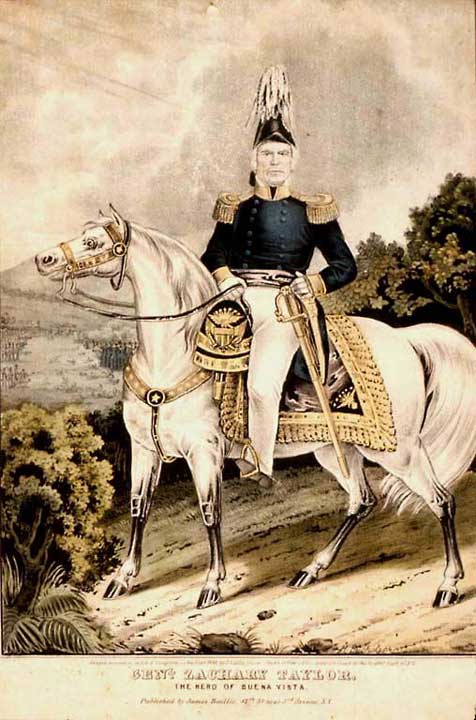Zachary Taylor, 1784-1850

This article is written by Amanda Walli, a recent graduate in history and art history from the University of Maryland; she is interning at the National Portrait Gallery. She writes about H. Bucholzer’s 1848 portrait of Zachary Taylor, a lithograph that belongs to the National Portrait Gallery.
Zachary Taylor’s presidency was very brief, lasting only from his inauguration in 1849 to his death on July 9, 1850. Despite his short time in office, Taylor was president in a crucial time in American history and presided over events that would lead up to the Civil War.
Born in Virginia and raised in Kentucky, Taylor was also a slaveholder and had a plantation in Louisiana. Despite his southern background, Taylor was a nationalist, which is evident both in his forty years of service in the United States Army and in his presidency. The officer known as “Old Rough and Ready” was first involved in wars with Native Americans in the frontier. He later gained fame in the Mexican War, in which he won important victories as a general. He was nominated by the Whig Party for the presidency in 1848 because of his actions in the war and his broad appeal as both a southerner and an army officer.
As president, Taylor’s nationalist concerns became evident when he refused to place the interests of his fellow slaveholders over the interests of the country. Taylor battled sectional conflict throughout his short presidency and infuriated the southern states when he encouraged both California and New Mexico to apply for statehood by drafting state constitutions. Both states would most likely apply as free, rather than slave, states, an obvious cause for concern in the South. Some southern states began advocating for secession because of the crisis, but Taylor stood his ground and threatened hangings to anyone who did not remain loyal to the Union. Taylor died on July 9, 1850, after falling ill at the Fourth of July ceremonies, and never saw the enacting of the Compromise of 1850 or its failure with the outbreak of war eleven years later.
In this colored lithograph of Taylor, made by H. Bucholzer in 1848, Taylor is shown in his military garb sitting on a white horse. This was made when he was a general in the Mexican War and celebrates his victory in battle, calling him “the hero of Buena Vista.”